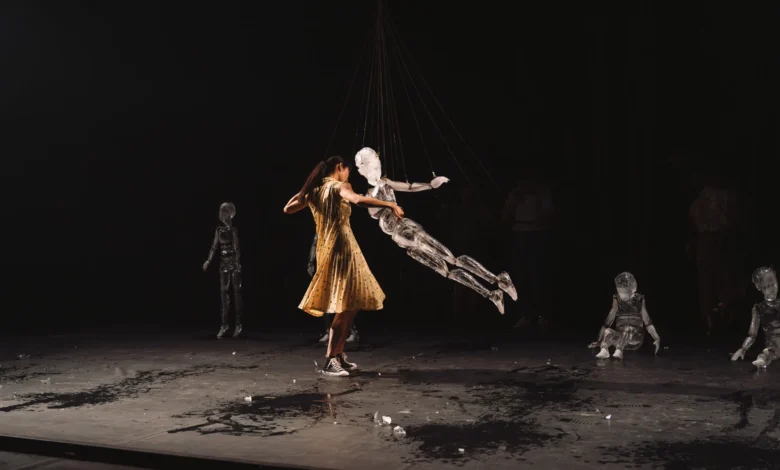
Creative entrepreneurship has always danced to the beat of innovation. From the printing press to social media, each era has seen artists and creators reshape industries by embracing the tools of their time. Today, expert Benjy Grinberg enthuses that artificial intelligence (AI) is the next transformative instrument in this evolutionary rhythm. As creators, founders, and innovators tap into its power, AI isn’t just changing the game; it’s remixing the very way creativity scales, connects, and monetizes in a digital-first world.
AI as the New Creative Collaborator
One of the most exciting shifts in creative entrepreneurship is AI’s role as a collaborative partner, rather than just a tool. Whether it’s generating original music tracks, assisting with graphic design, or drafting story outlines, AI is offering creators a new layer of support that enhances, rather than replaces, human input. Platforms like Runway, DALL·E, and Soundraw are empowering artists to experiment faster and iterate more boldly.
Instead of spending hours on routine or repetitive tasks, creatives can now channel more energy into refining ideas and elevating concepts. This shift allows for greater experimentation and democratizes access to high-quality outputs. An independent filmmaker, for instance, can now use AI to storyboard scenes or enhance visual effects without the need for a full production crew. The result? More voices and visions are reaching audiences without the traditional barriers to entry.
Rewriting the Rules of Monetization
AI is also transforming how creative entrepreneurs monetize their work. With predictive analytics and recommendation algorithms, artists can gain a deeper understanding of their audiences, personalize their offerings, and streamline delivery. For example, musicians using AI-driven platforms can test song versions to see which chorus resonates most with listeners. Writers can A/B test blog post titles or themes before publishing. This data-informed creativity is transforming how art reaches the market, and how it succeeds once it’s there.
On the business end, Benjy Grinberg AI tools help with everything from dynamic pricing to sales forecasting. Creators can more accurately predict which merchandise will perform, which content will drive subscriptions, or which campaigns will convert followers into paying supporters. In short, AI brings a business-savvy edge to creative intuition, helping passion-driven entrepreneurs become scalable brands.
Lowering Barriers, Raising the Bar
AI is playing a pivotal role in lowering the cost and complexity of creative ventures. Graphic designers no longer need high-end software licenses to produce professional-grade visuals. Musicians can explore complex sound engineering from the comfort of their laptops. Entrepreneurs building digital products, from e-books to online courses and NFT art, can automate their production processes, reducing the time-to-launch.
But while AI lowers the barriers to entry, it simultaneously raises the standard for innovation. With so many creators now empowered by smart tools, originality becomes even more essential. It’s not enough to generate content; you have to bring perspective, voice, and authenticity. This is where human creativity still reigns supreme. AI can assist, but it cannot replace the emotional intelligence, cultural nuance, or lived experience that shapes truly resonant work.
The Rise of AI-Driven Business Models
As creative entrepreneurs delve deeper into AI, new business models are emerging. Subscription-based models are becoming increasingly dynamic, offering personalized user experiences. Virtual influencers and AI-generated avatars are opening fresh streams of revenue through branded content, virtual concerts, and interactive storytelling.
AI is also enabling micro-entrepreneurship on a large scale. A creator can now launch a brand with a virtual assistant handling customer service, a chatbot nurturing leads, and AI-generated ads that optimize marketing in real-time. Even small teams, or solo founders, can operate like full-scale agencies with the right AI stack in place.
For example, an illustrator selling art prints can use AI to generate mockups, auto-respond to customer queries, track sales trends, and even suggest new themes based on customer preferences. The future of entrepreneurship is no longer about doing more with less; it’s about doing more with intelligence.
Ethical Considerations and Creative Control
Of course, the rise of AI in the creative world doesn’t come without its challenges. Issues surrounding intellectual property, originality, and bias in AI systems continue to be a topic of ongoing debate. Who owns the rights to AI-generated content? How do we ensure AI doesn’t reproduce or amplify existing cultural stereotypes? Creative entrepreneurs must now consider these questions as part of their strategic roadmap.
Maintaining control and integrity over one’s creative identity becomes even more critical. Many creators are adopting hybrid models, using AI for efficiency but grounding their work in human-led decisions and values. Transparency about the role AI plays in the process helps build trust with audiences who crave both innovation and authenticity.
Building a Human-AI Creative Culture
At its core, the future of creative entrepreneurship isn’t about choosing between man and machine; it’s about building a culture where both work together. The entrepreneurs who thrive in this new rhythm will be those who see AI not as a shortcut but as an amplifier. They’ll experiment boldly, stay agile, and keep storytelling at the heart of everything they do.
Collaboration will also be key. We’re seeing collectives of artists, technologists, and strategists co-create AI-infused projects that push boundaries and defy categories. As platforms evolve, so too will the communities that grow around them, sharing prompts, ideas, and breakthroughs that ripple outward.
Final Thoughts: A New Era of Possibility
Creative entrepreneurship has continuously evolved in tandem with technology, but AI marks a particularly significant inflection point. It’s not just transforming the how of creativity, it’s expanding the who, the what, and the why. From music and fashion to content creation and digital products, AI is remixing the landscape in real-time, unlocking new forms of expression and enterprise. For creators with vision, drive, and a willingness to adapt, this is an unprecedented moment to build, scale, and inspire. The rhythm of innovation is playing louder than ever, and the following verse is yours to write.




